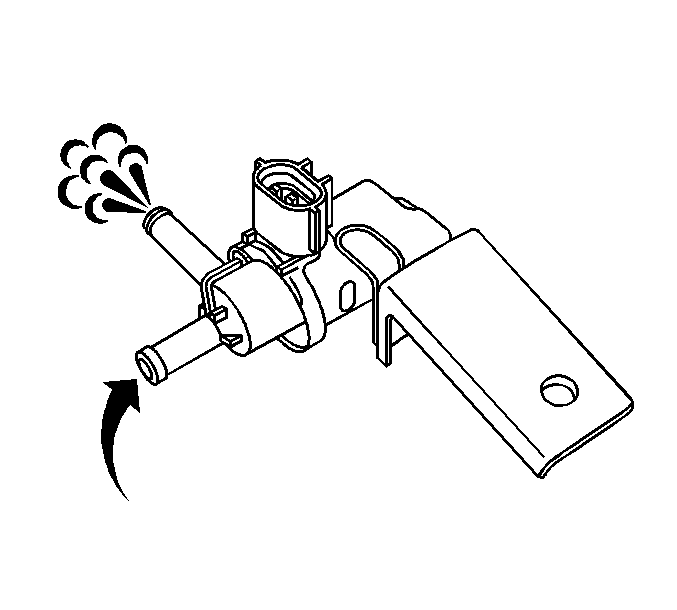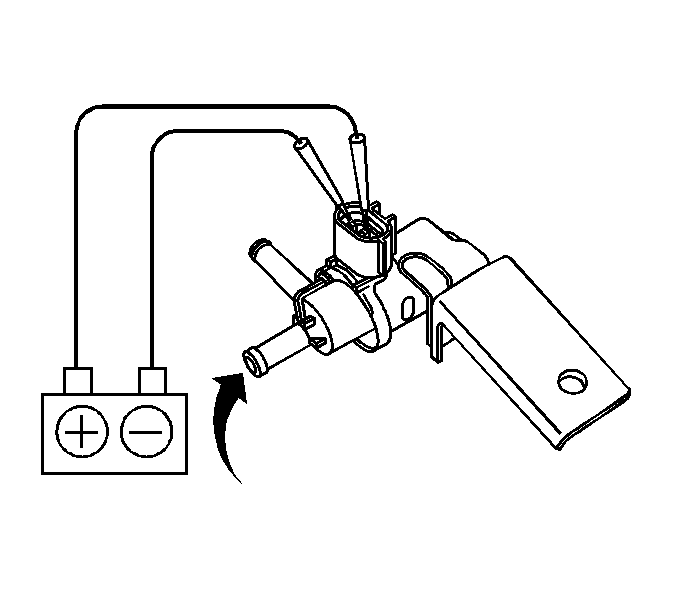EVAP Canister Inspection with FWD
Tools Required
J 23738-A Hand Vacuum Pump
- Remove the EVAP canister. Refer to Evaporative Emission Canister Replacement .
- Visually inspect the EVAP canister, especially at the arrows, for any cracks or damage.
- Plug the ORVR vent line port (4). The vent port will remain plugged for all the tests.
- Block the purge port (3) closed.
- Blow air with a pressure of 1.7 kPa (0.5 in Hg/0.25 psi) into the EVAP vapor port (2).
- Verify that air flows out of drain hose (1).
- Block the purge port (3) and the drain hose (1) closed.
- Blow air with a pressure of 1.7 kPa (0.5 in Hg/0.25 psi) into the EVAP vapor port (4).
- Verify that air does not flow out of the air inlet port (2).
- Block the air inlet port (2) closed.
- Connect the J 23738-A or an equivalent hand vacuum pump to the purge port (1).
- Apply a vacuum of 3.5 kPa (1.0 in Hg/0.5 psi) to purge port (1) with the hand vacuum pump.
- Verify that the vacuum holds while the air inlet port (2) is closed.
- Open the air inlet port (2) and verify that the vacuum is released.
- Block the air inlet port (1) closed.
- Connect the J 23738-A or an equivalent hand vacuum pump to the EVAP vapor port (3).
- Apply a vacuum of 3.5 kPa (1.0 in Hg/0.5 psi) to the EVAP vapor port (3) with the hand vacuum pump.
- Verify that there is vacuum pressure at the purge port (2).
- Replace the EVAP canister if the canister failed any of the inspections or tests. Refer to Evaporative Emission Canister Replacement .

Caution: Do not breathe the air through the EVAP component tubes or hoses. The fuel vapors inside the EVAP components may cause personal injury.
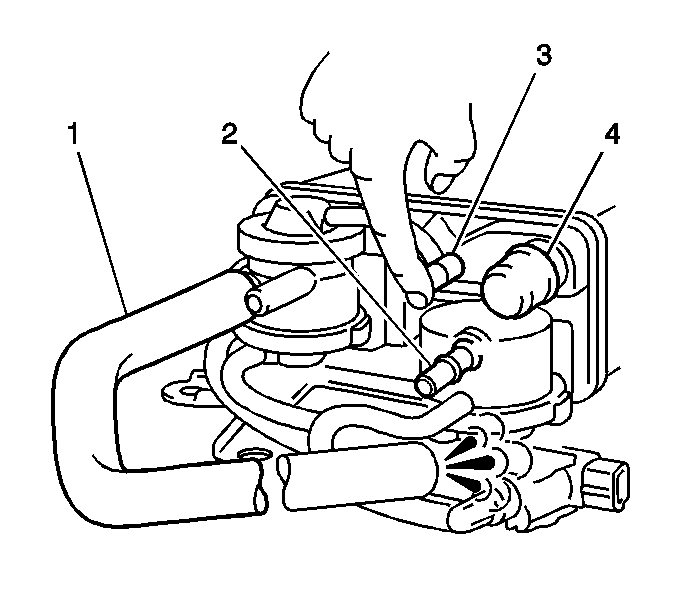
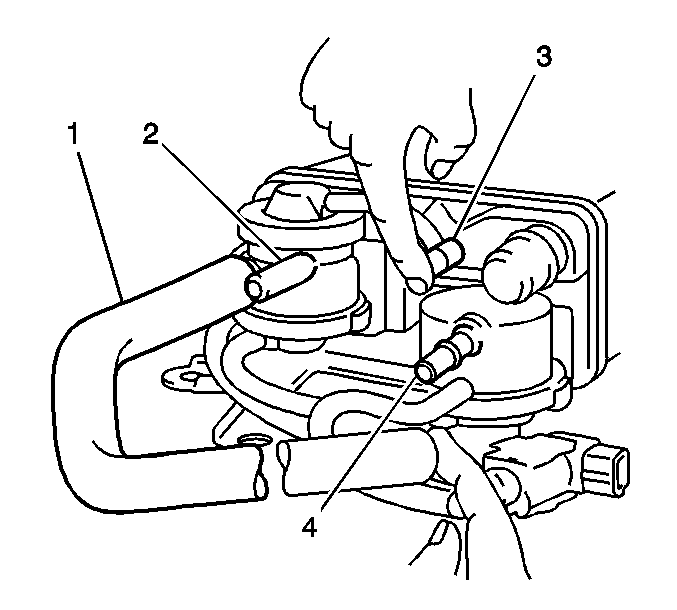
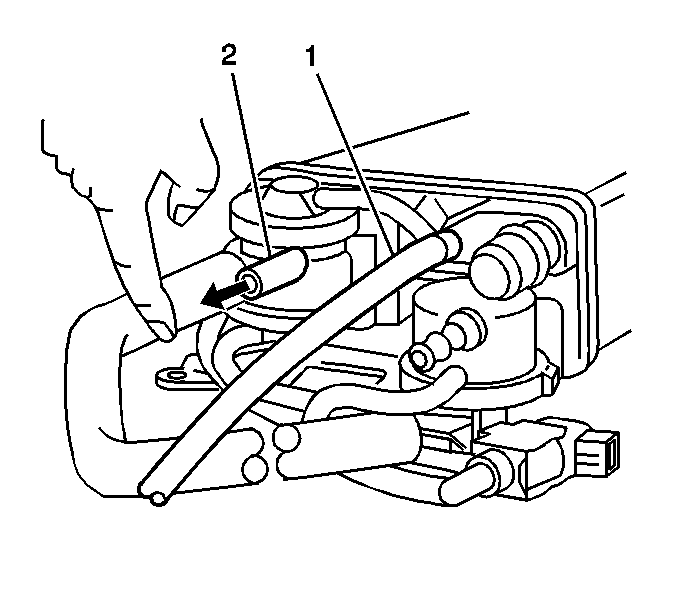
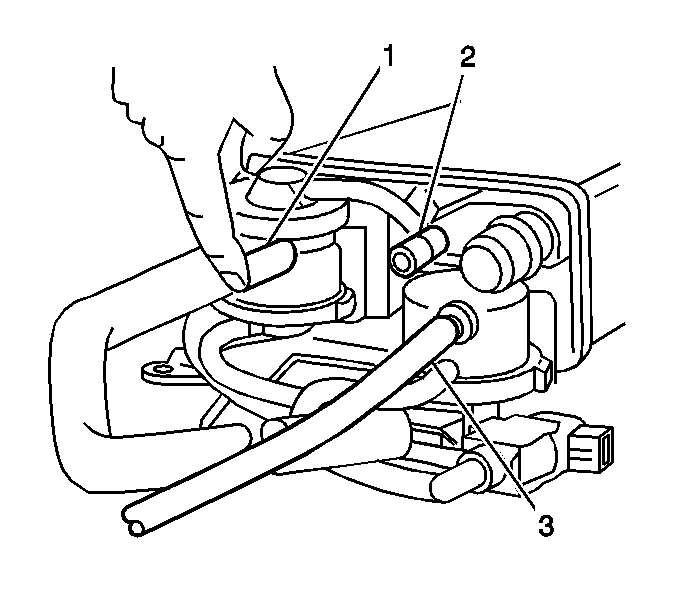
EVAP Canister Inspection with AWD
Tools Required
J 23738-A Hand Vacuum Pump
- Remove the EVAP canister. Refer to Evaporative Emission Canister Replacement .
- Visually inspect the EVAP canister, especially at the arrows, for any cracks or damage.
- Plug the ORVR vent line port (4). The vent port will remain plugged for all the tests.
- Block the purge port (3) closed.
- Blow air with a pressure of 1.7 kPa (0.5 in Hg/0.25 psi) into the EVAP vapor port (2).
- Verify that air flows out of drain hose (1).
- Block the purge port (2) and the drain hose (1) closed.
- Blow air with a pressure of 1.7 kPa (0.5 in Hg/0.25 psi) into the EVAP vapor port (3).
- Verify that air does not flow out of the air inlet port (4).
- Block the air inlet port (1) closed.
- Connect the J 23738-A or an equivalent hand vacuum pump to the purge port (2).
- Apply a vacuum of 3.5 kPa (1.0 in Hg/0.5 psi) to purge port (2) with the hand vacuum pump.
- Verify that the vacuum holds while the air inlet port (1) is closed.
- Open the air inlet port (2) and verify that the vacuum is released.
- Block the air inlet port (1) closed.
- Connect the J 23738-A or an equivalent hand vacuum pump to the EVAP vapor port (3).
- Apply a vacuum of 3.5 kPa (1.0 in Hg/0.5 psi) to the EVAP vapor port (3) with the hand vacuum pump.
- Verify that there is vacuum pressure at the purge port (2).
- Replace the EVAP canister if the canister failed any of the inspections or tests. Refer to Evaporative Emission Canister Replacement .
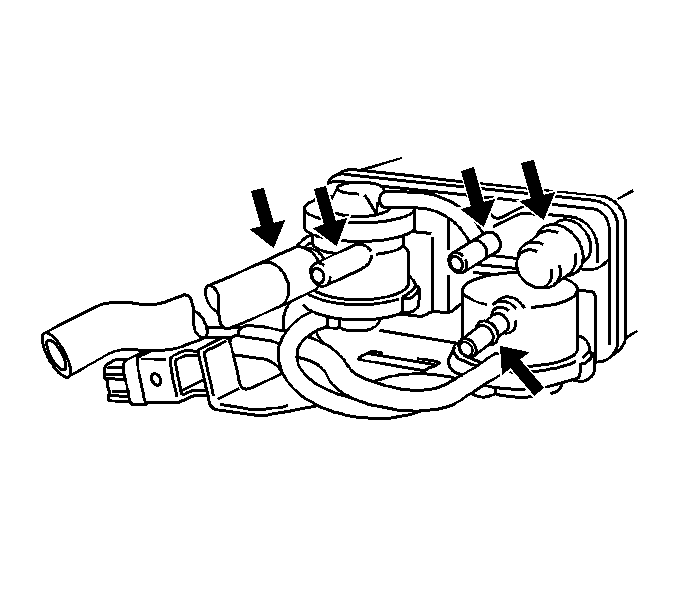
Caution: Do not breathe the air through the EVAP component tubes or hoses. The fuel vapors inside the EVAP components may cause personal injury.
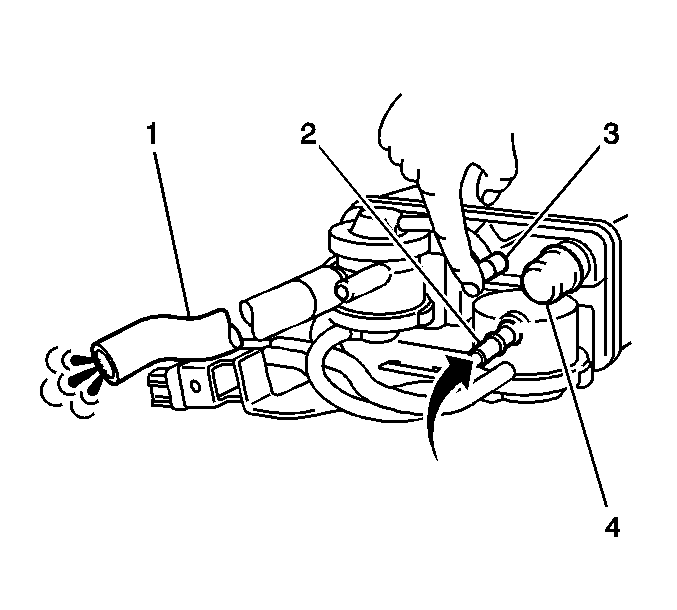
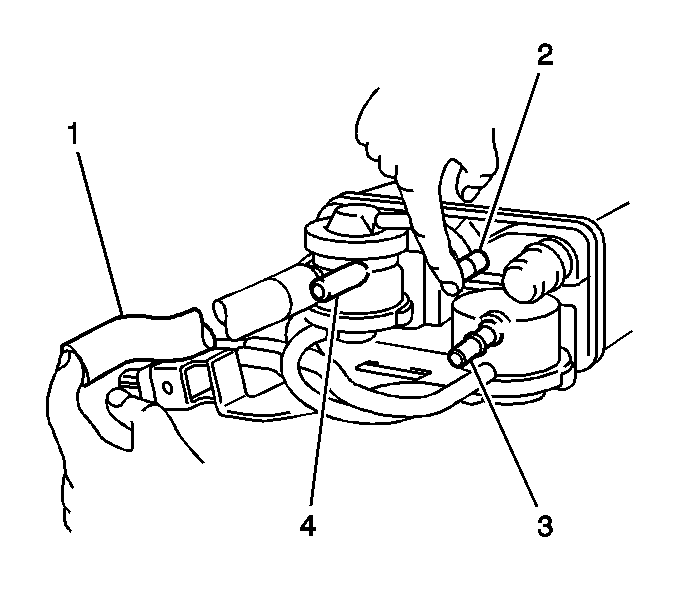

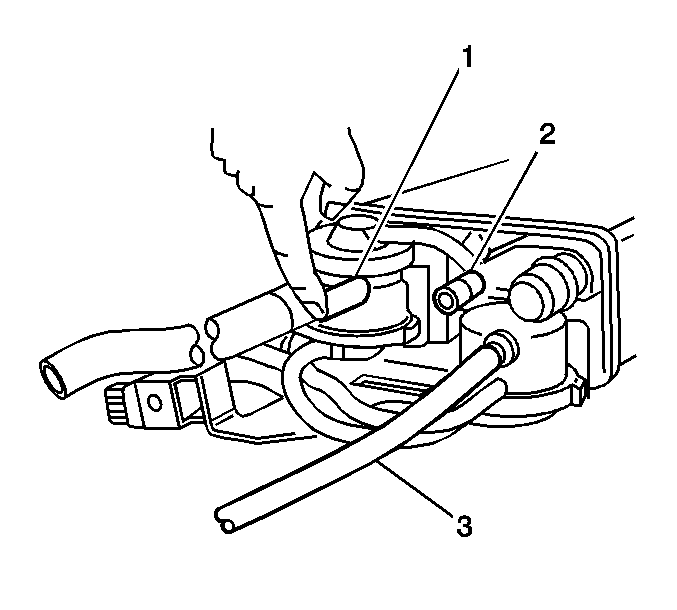
EVAP Canister Purge Valve Inspection
- Remove the EVAP canister purge valve. Refer to Evaporative Emission Canister Purge Solenoid Valve Replacement .
- Use a DMM in order to measure the resistance of the EVAP canister purge valve.
- Replace the EVAP canister purge valve if the resistance is not within the specified range. The solenoid can damage the powertrain control module (PCM) if the resistance value is less than 27 ohms.
- Check the PCM and replace if necessary. Refer to Powertrain Control Module Replacement .
- Check for continuity of each terminal to the valve body.
- Replace the EVAP canister purge valve if continuity is present.
- Blow air into one of the ports. The air should NOT flow through the opposite port.
- Apply battery voltage across the terminals of the EVAP canister purge valve.
- Blow air into the one port. The air should flow easily to the opposite port.
- Replace the EVAP canister purge valve if the valve failed either test. Refer to Evaporative Emission Canister Purge Solenoid Valve Replacement .
Caution: Do not breathe the air through the EVAP component tubes or hoses. The fuel vapors inside the EVAP components may cause personal injury.
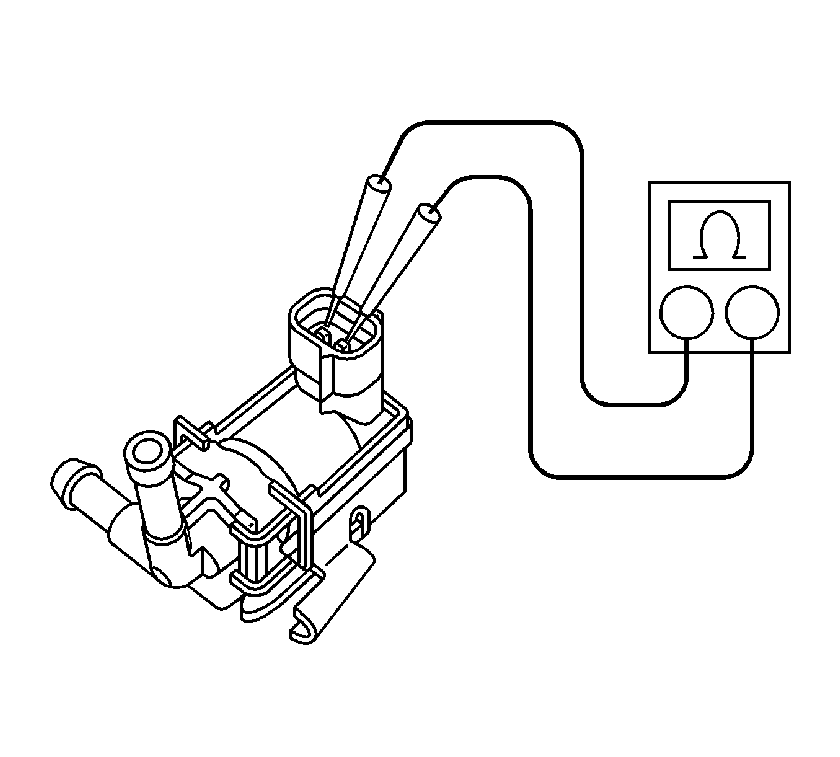
Measure
The EVAP canister purge valve resistance should be 27-33 ohms at 20°C (68°F).
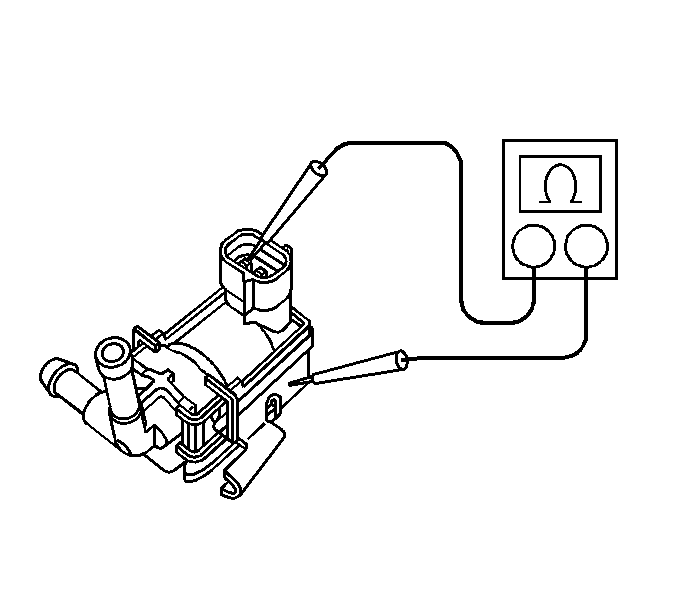
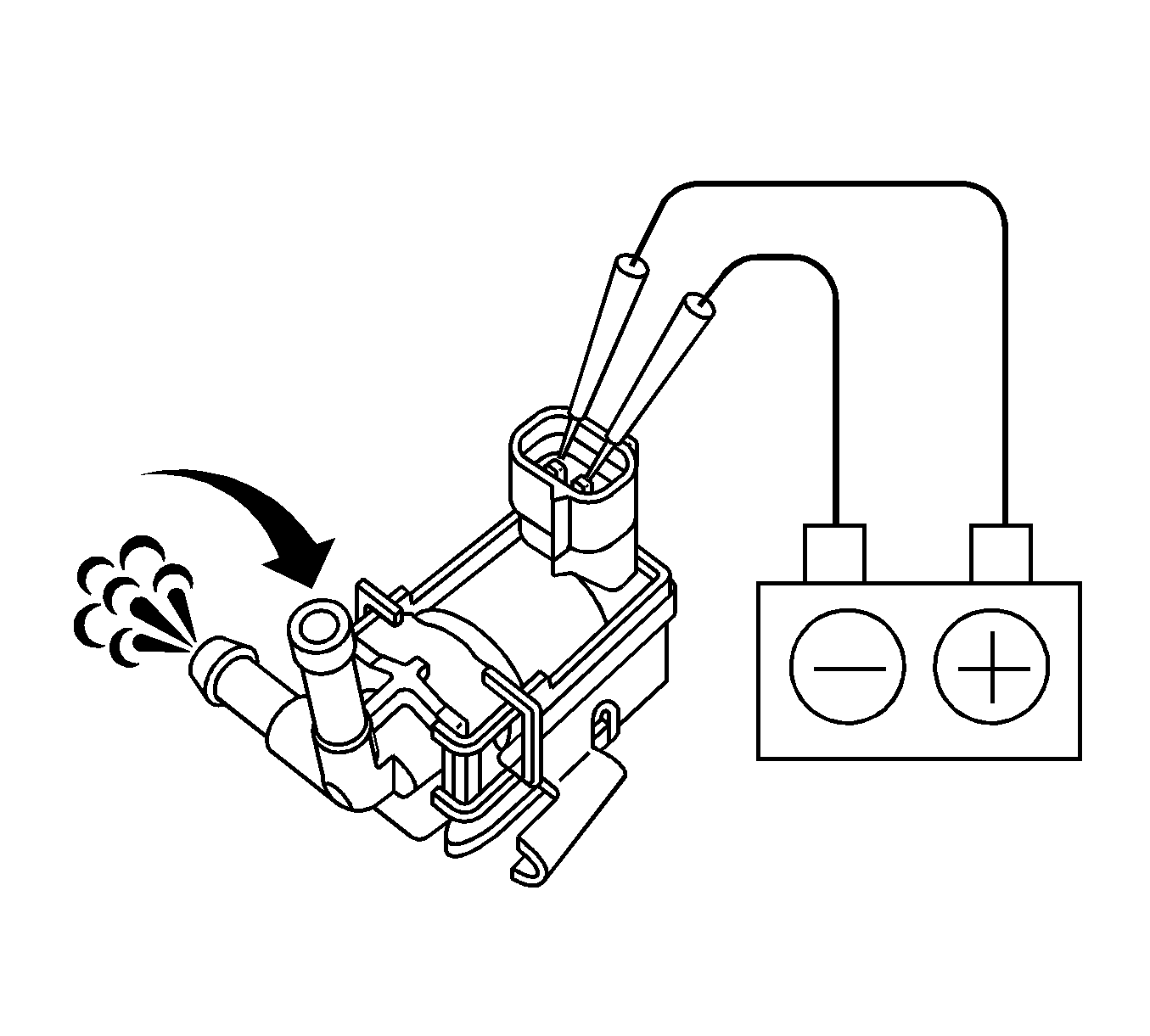
EVAP Pressure Switching Solenoid Inspection
- Remove the EVAP pressure switching solenoid. Refer to Evaporative Emission Pressure Switching Solenoid Replacement .
- Use a DMM in order to measure the resistance of the EVAP pressure switching solenoid.
- Replace the EVAP pressure switching solenoid if the resistance is not within the specified range. The solenoid will damage the PCM, if the resistance value is less than 27 ohms.
- Check for continuity on each terminal to the valve body.
- Replace the EVAP pressure switching solenoid if continuity is present. Refer to Evaporative Emission Pressure Switching Solenoid Replacement .
- Blow air into the inboard port (1). The air should NOT flow through the valve and out of the outboard port (2).
- Apply battery voltage across the terminals of the EVAP pressure switching solenoid.
- Blow air into the inboard port (1) and air should flow through the valve and out of the outboard port (2).
- Replace the EVAP pressure switching solenoid if the solenoid failed either test. Refer to Evaporative Emission Pressure Switching Solenoid Replacement .
Caution: Do not breathe the air through the EVAP component tubes or hoses. The fuel vapors inside the EVAP components may cause personal injury.
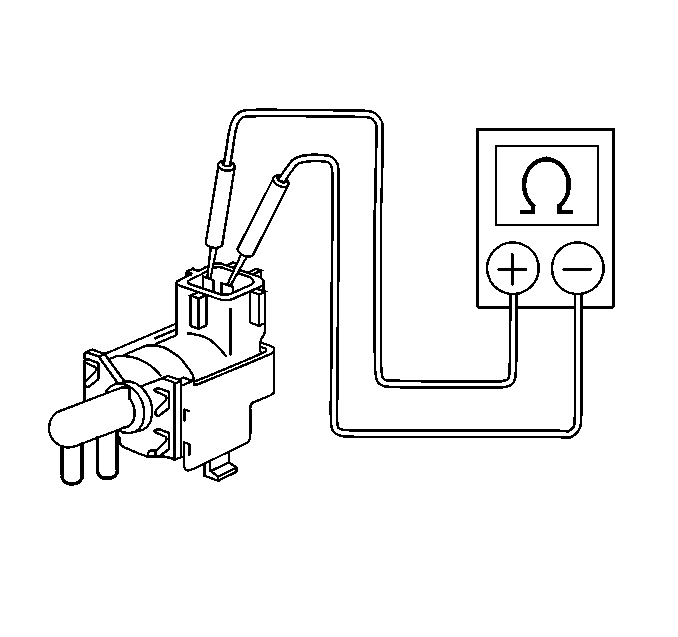
Measure
The EVAP pressure switching solenoid resistance is 37-44 ohms at 20°C (68°F).
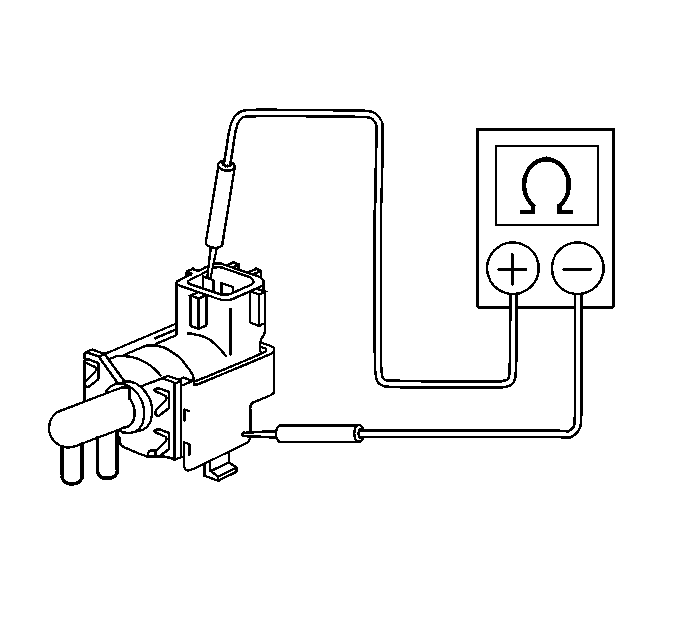

EVAP Canister Vent Valve Inspection
- Disconnect the EVAP vent solenoid electrical connector.
- Use a DMM in order the measure the solenoid resistance value.
- Replace the solenoid if the resistance is not within the specified range. Refer to Evaporative Emission Canister Vent Solenoid Valve Replacement .
- Use a DMM in order the check for continuity between each solenoid terminal and solenoid housing.
- Replace the EVAP vent solenoid valve if the resistance is not within specification. A shorted valve will cause damage to the PCM.
- Blow air through the upper port of the EVAP vent valve. Air has to flow freely through the lower port.
- Replace the valve if the air does not flow through the upper port. Refer to Evaporative Emission Canister Vent Solenoid Valve Replacement .
- Apply battery voltage across the solenoid terminals.
- Blow air through the upper port of the solenoid. Air should NOT flow through the valve.
- Replace the solenoid if the solenoid fails any of the tests. Refer to Evaporative Emission Canister Vent Solenoid Valve Replacement .
Caution: Do not breathe the air through the EVAP component tubes or hoses. The fuel vapors inside the EVAP components may cause personal injury.
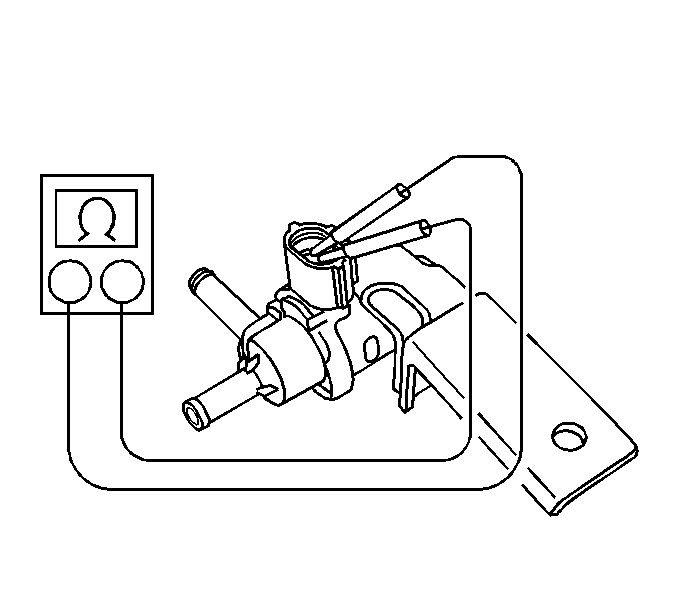
Measure
The resistance should be between 25-30 ohms at 20°C (68°F).
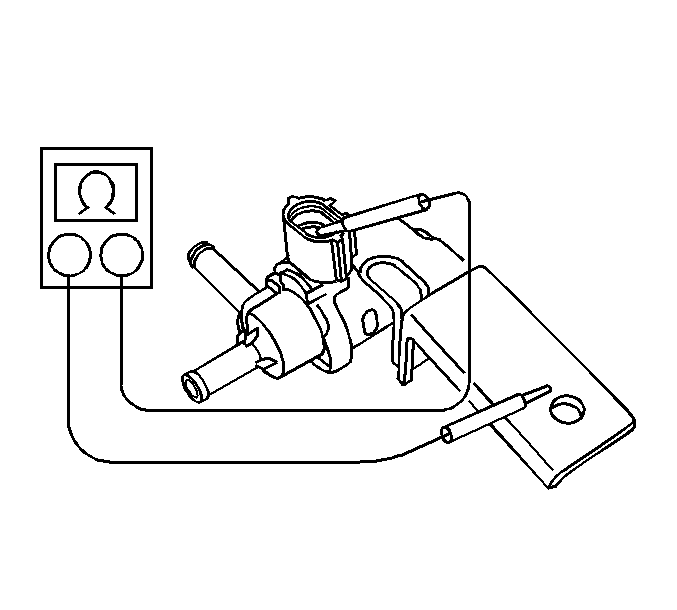
Measure
The DMM has to read infinite (OL).
